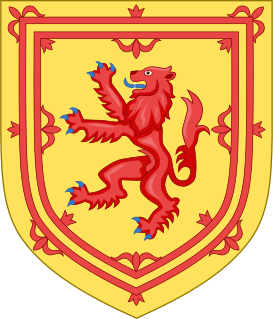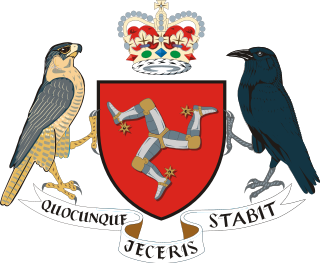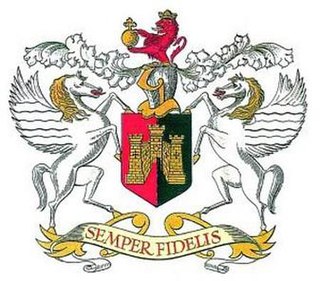Related Research Articles

Local government in Scotland is organised through 32 unitary authorities designated as councils which consist of councillors elected every five years by registered voters in each of the council areas.
The boundary commissions in the United Kingdom are non-departmental public bodies responsible for determining the boundaries of constituencies for elections to the House of Commons. There are four boundary commissions:

Boundaries Scotland is an independent body in Scotland created as the Local Government Boundary Commission for Scotland under the Local Government (Scotland) Act 1973. According to its website, it is responsible for: carrying out reviews of boundaries of local authority areas; reviews of electoral arrangements for local authorities; responding to requests for ad hoc reviews of electoral or administrative arrangements; and reviews of constituencies and regions for the Scottish Parliament. Its work relates to the local government of Scotland, and it reports to the Scottish Government. Its counterpart organisations elsewhere in the UK are the Local Government Boundary Commission for England, the Local Democracy and Boundary Commission for Wales and the Local Government Boundaries Commissioner for Northern Ireland.

Leeds City Council is the local authority of the City of Leeds in West Yorkshire, England. It is a metropolitan district council, one of five in West Yorkshire and one of 36 in the metropolitan counties of England, and provides the majority of local government services in Leeds. It has the second-largest population of any council in the United Kingdom with approximately 800,000 inhabitants living within its area; only Birmingham City Council has more. Since 1 April 2014, it has been a constituent council of the West Yorkshire Combined Authority.

Local governmentin the Isle of Man was formerly based on six sheadings, which were divided into seventeen parishes. The island is today divided for local government purposes into town districts, village districts, parish districts, and "districts", as follows:

East Hertfordshire District Council is the local authority for the East Hertfordshire non-metropolitan district of England, the United Kingdom. East Hertfordshire covers most of the eastern third of Hertfordshire, in the East of England region. The council area includes the county town of Hertford, the district's largest town Bishop's Stortford, Ware, Sawbridgeworth, Buntingford and neighbouring villages.

Peterborough City Council is the local authority for Peterborough in the East of England. It is a unitary authority, having the powers of a non-metropolitan county and district council combined. The City was incorporated as a municipal borough in 1874; from 1888, it fell within the jurisdiction of the Soke of Peterborough county council and from 1965, Huntingdon and Peterborough county council. In 1974, it was replaced by a wholly new non-metropolitan district, broadly corresponding to the Soke, in the new enlarged Cambridgeshire. In 1998, Peterborough became independent of Cambridgeshire as a unitary authority, but the city continues to form part of that county for ceremonial purposes as defined by the Lieutenancies Act 1997.

The unitary authorities of England are those local authorities which are responsible for the provision of all local government services within a district. They are constituted under the Local Government Act 1992, which amended the Local Government Act 1972 to allow the existence of counties that do not have multiple districts. They typically allow large towns to have separate local authorities from the less urbanised parts of their counties and originally provided a single authority for small counties where division into districts would be impractical. However the government has more recently proposed the formation of much larger unitary authorities, including a single authority for North Yorkshire, the largest non-metropolitan county in England, at present divided into seven districts.

The Local Government Commission for England was the body responsible for reviewing the structure of local government in England from 1992 to 2002. It was established under the Local Government Act 1992, replacing the Local Government Boundary Commission for England. The Commission could be ordered by the Secretary of State to undertake "structural reviews" in specified areas and recommend the creation of unitary authorities in the two-tier shire counties of England. The Commission, chaired by John Banham, conducted a review of all the non-metropolitan counties of England from 1993 to 1994, making various recommendations on their future.
The Local Government Boundary Commission for England (LGBCE) is a parliamentary body established by statute to conduct boundary, electoral and structural reviews of local government areas in England. The LGBCE is independent of government and political parties, and is directly accountable to the Speaker's Committee of the House of Commons.

Exeter City Council is the council and local government of the city of Exeter, Devon.

Wiltshire Council elections date from 2009, when the Wiltshire Council unitary authority was created.

Structural changes to local government in England were effected on 1 April 2009, whereby a number of new unitary authorities were created in parts of the country which previously operated a 'two-tier' system of counties and districts. In five shire counties the functions of the county and district councils were combined into a single authority; and in two counties the powers of the county council were absorbed into a significantly reduced number of districts.
Salisbury District Council was the local authority responsible for Salisbury District in Wiltshire, England. It was established by the Local Government Act 1972 to replace several borough and rural district councils, and abolished in 2009 when its powers and assets were transferred to Wiltshire Council, along with those of the other three district councils in Wiltshire. Consequently, Wiltshire became a single tier unitary authority administered by Wiltshire Council.
The Local Government Boundary Commission for England (LGBCE) was the statutory body established under the Local Government Act 1972 to settle the boundaries, names and electoral arrangements of the non-metropolitan districts which came into existence in 1974, and for their periodic review. The stated purpose of the LGBCE was to ensure "that the whole system does not get frozen into the form which has been adopted as appropriate in the 1970s". In the event it made no major changes and was replaced in 1992 by the Local Government Commission for England.

New Zealand has a unitary system of government in which the authority of the central government defines sub-national entities. Local government in New Zealand has only the powers conferred upon it by the New Zealand Parliament. In general, local authorities are responsible for enabling democratic local decision-making and promoting the social, economic, environmental, and cultural well-being of their communities, as well as more specific functions for which they have delegated authority.

The Sixth Periodic Review of Westminster constituencies, also known as the 2013 Review, 2018 Review, or just boundary changes, was an ultimately unfruitful cycle of the process by which constituencies of the House of Commons of the United Kingdom are reviewed and redistributed. The four UK boundary commissions carried out their reviews between 2011 and 2018, but their recommendations were not taken up by the government and were formally laid aside in 2020.
The fifth full elections for Guildford Borough Council took place on 1 May 1987. The Conservatives retained control of the council winning 30 of the 45 seats on the council. This represented one net loss for the Conservatives, relative to the 1983 council elections. Labour retained its 6 councillors. The SDP-Liberal Alliance won 9 seats, a net gain of two seats on the 1983 council elections. No independents were elected to the council, one had been elected in 1983.

Dorset Council is a unitary local authority in England covering most of the ceremonial county of Dorset. It was created on 1 April 2019 to administer most of the area formerly administered by Dorset County Council, which was previously subdivided into the districts of Weymouth and Portland, West Dorset, North Dorset, Purbeck, and East Dorset, as well as Christchurch, which is now part of Bournemouth, Christchurch and Poole.

Local elections in the United Kingdom will be held on 5 May 2022. These will include elections for all London borough councils, and for all local authorities in Wales and Scotland. Most seats in England were last up for election in 2018 and in Scotland and Wales in 2017. The elections will coincide with the 2022 Northern Ireland Assembly election.
References
- ↑ (PDF) https://web.archive.org/web/20110811215340/http://www.electoralcommission.org.uk/__data/assets/pdf_file/0006/82923/Royal-Assent-on-LDEDC-letter-to-all-CXs.pdf. Archived from the original (PDF) on 2011-08-11.
{{cite web}}: Missing or empty|title=(help)